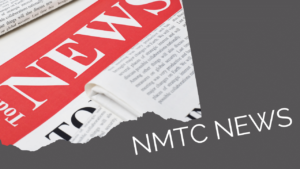With the release of “Decoding the Tax Code” today, Senator Tom Coburn (R-OK) continues to claim that the NMTC projects result in the government choosing favorites. The report rehashes the tired and baseless criticism of the NMTC levied in his previous report, “Banking on the Poor,” released this fall in conjunction with a GAO report that he commissioned, “Better Controls and Data are Needed to Ensure Program Effectiveness.”
In fact, the NMTC is the furthest thing from Washington picking winners and losers. It is a market-driven program based on a philosophy that communities know best, they just need access to capital. Furthermore, the Treasury Department data continues to demonstrate the effectiveness of the NMTC at growing businesses, creating jobs, and improving local economies. Through public-private partnerships, the Credit brings community revitalization projects to fruition that likely would not have gone forward, but for NMTC financing.
The Coburn report notes that the impetus for the New Markets Tax Credit is to help struggling communities. He contends it does not succeed in this, writing that “Most of the country, however, is considered a low-income community for purposes of the program.” However, data from the U.S. Department of Treasury indicates that the NMTC has delivered more than $60 billion in capital to businesses and revitalization projects nationwide in some of the poorest communities; these investments have generated over 550,000 jobs and of the 74,134 census tracts in America, only 30,099 (41%) qualify. Moreover, according to the NMTC Coalition’s survey of 2013 NMTC projects, 80 percent of investments went to severely distressed census tracts that far exceed the statutory requirements for investment.
The report also rehashes criticisms of several individual NMTC projects that Senator Coburn deems unworthy of investment. However, the hallmark of the credit is its flexibility, which allows for diversity in projects based on needs and opportunities identified by citizens and local leaders—not Washington bureaucrats. The vast majority of NMTC projects are child care and healthcare facilities, grocery stores, and manufacturing facilities.
Senator Coburn once again misconstrues NMTC investor returns by citing a flawed GAO report that provides an inaccurate analysis of the operations of the NMTC. GAO overestimated the return for one investor by 400 percent through faulty analysis, later conceding that such a large return probably was not the case. The NMTC Coalition estimates that the actual NMTC investor returns align with market rates of 6 to 7 percent annually, at the lower range of the typical return for risk-based capital.
Coburn cites the NMTC’s cost as $1 billion in Fiscal Year 2014, but fails to note that for $1 billion in forgone federal revenue, the NMTC will deliver more than $8 billion in capital to businesses, community facilities, and revitalization projects in low income communities. According to a new report that will be released by the New Markets Tax Credit Coalition tomorrow, the NMTC generates a substantial return on investment for federal taxpayers. In 2012, the estimated cost of the NMTC to the federal government was $800 million, but NMTC projects generated $984 million in federal tax revenue, more than enough to cover the cost of the program.
The fact is that Senator Coburn is a longtime critic of the NMTC and other tax incentives for community development because he opposes federal efforts to revitalize low income communities, even when those efforts are achieved through market-driven mechanisms. He seems to fundamentally misunderstand how market competition limits investor returns, maximizes the benefit to important projects, increases private sector leverage, and pushes the decision-making process from Washington to the local level.





